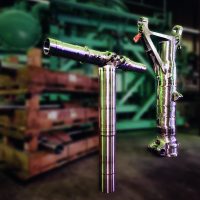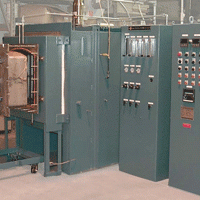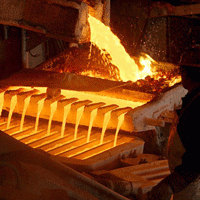VAC AERO welcomes and encourages applications from people with disabilities. Accommodations are available on request for candidates taking part in all aspects of the selection process. JOB OPENINGS There are no job openings at the moment, please check back later.
Archives for December 2017
Hot Wall Vacuum Retort Furnaces
Vacuum furnaces can be either hot wall or cold wall designs. There are notable differences between the two, and each has specific advantages and limitations. In this and our next article, we will examine these differences and describe which applications are best suited for each.
Early in the history of vacuum furnaces, hot wall designs were the only ones available. These furnaces, just as the ones today, utilize a retort (aka muffle) into which the load is placed. The retort is then sealed. A pump evacuates the retort and the process runs either under vacuum or at a specific (negative or positive) pressure once the initial vacuum level is reached. The advantages of using a retort include the fact that the furnace surrounding the retort can be gas-fired or electrically heated and that the retort can be rapidly pumped down. Hot wall designs are generally less expensive to manufacture than their cold wall counterparts. In addition, since the volume inside the retort is relatively small, the pumps are smaller and it takes less time to reach the required vacuum level for the process than a cold wall furnace of comparable size.
Vacuum Degassing of Steel
During the steelmaking process, while the molten steel is still in the ladle and before it is poured, the steel must be degassed in order to: (1) reduce/eliminate dissolved gases, especially hydrogen and nitrogen; (2) reduce dissolved carbon (to improve ductility); and (3) to promote preferential oxidation of dissolved carbon (over chromium) when refining stainless steel grades.
In the steel smelting process, unwanted gases are dissolved in the liquid, which could produce any number of imperfections and defects. A common method used to remove these undesired gases is vacuum degassing. The process is done after the molten steel has left the furnace and before being poured into ingots or introduced into a continuous caster. Throughout the early part of the 1900s, the steelmaking industry was plagued by poor quality steel This was due to the fact that during the production process, hydrogen and nitrogen gases were present in the molten steel. During cooling and subsequent solidification, the dissolved hydrogen caused pinholes and porosity in the final product since hydrogen has low solubility in steel at ambient temperature. The result was the release of hydrogen during solidification. Even the presence of a few parts per million of hydrogen gas causes defects and loss of yield strength.



